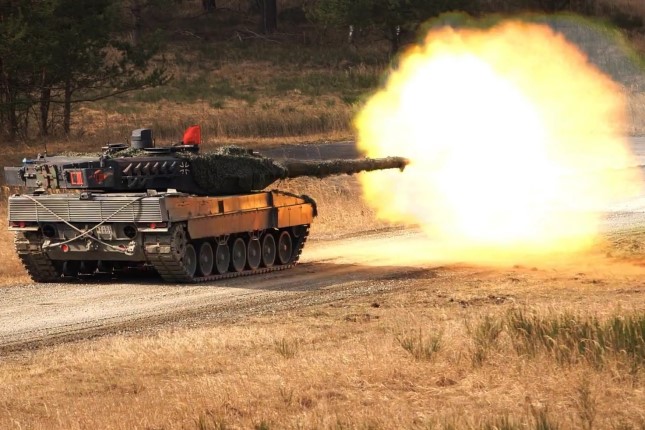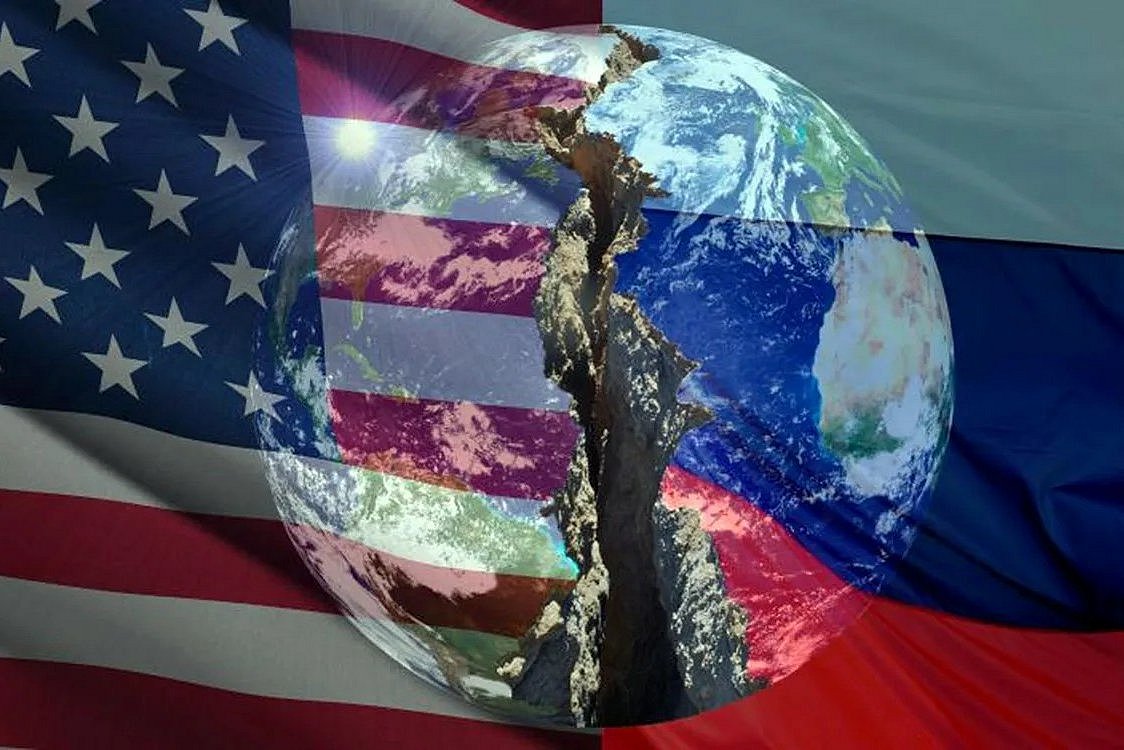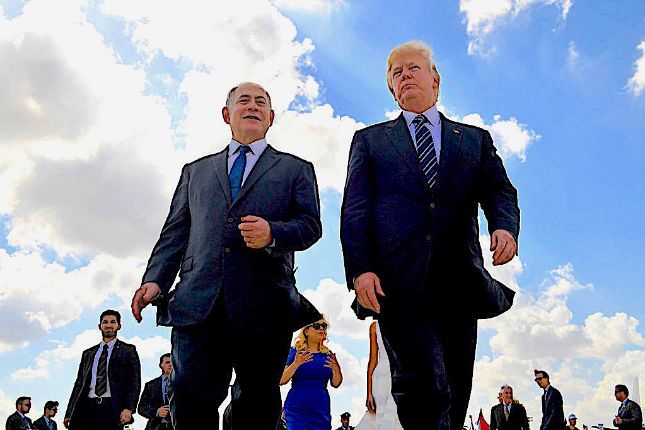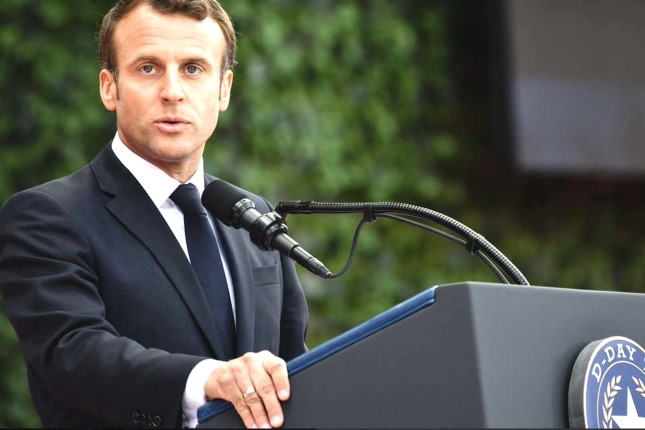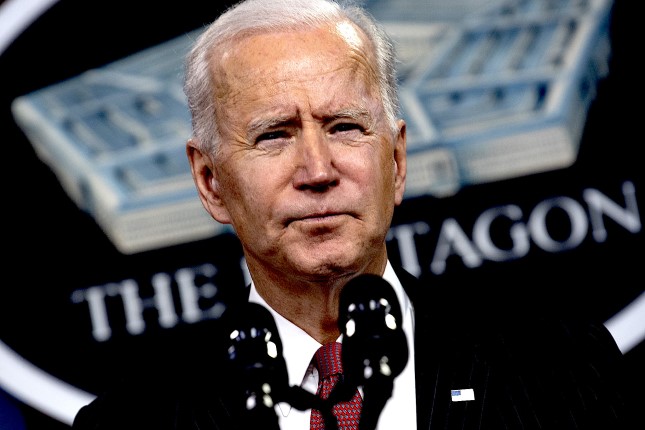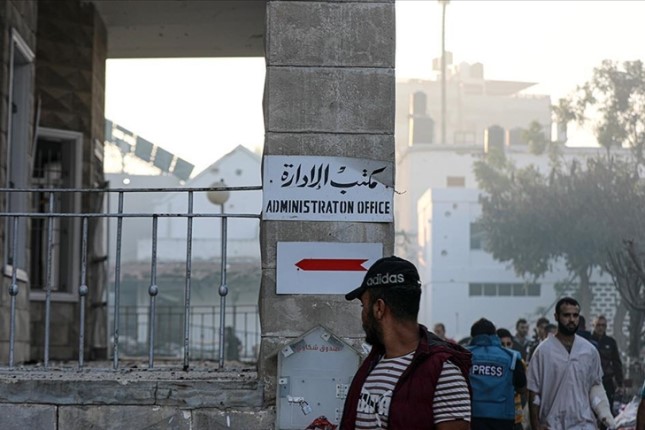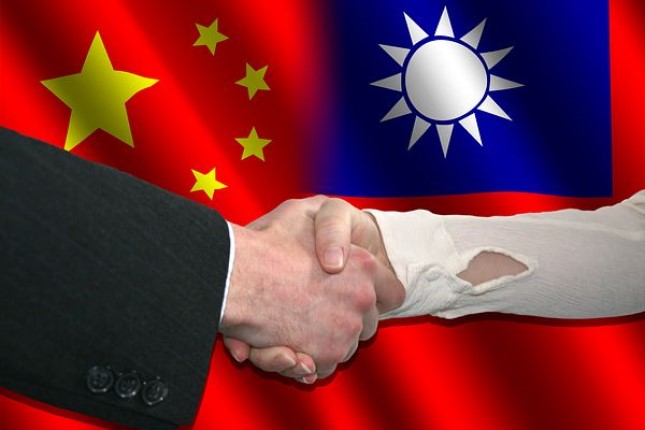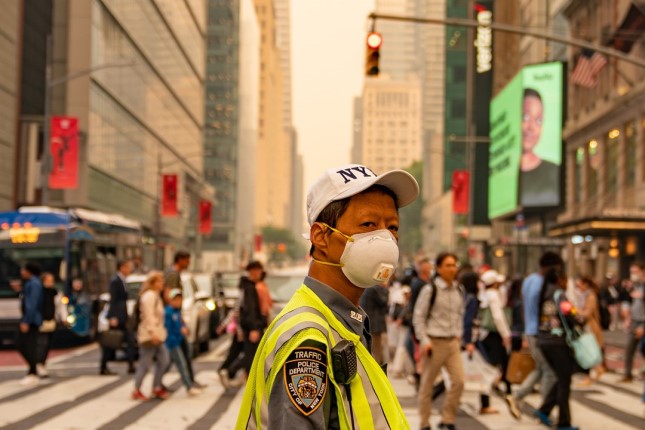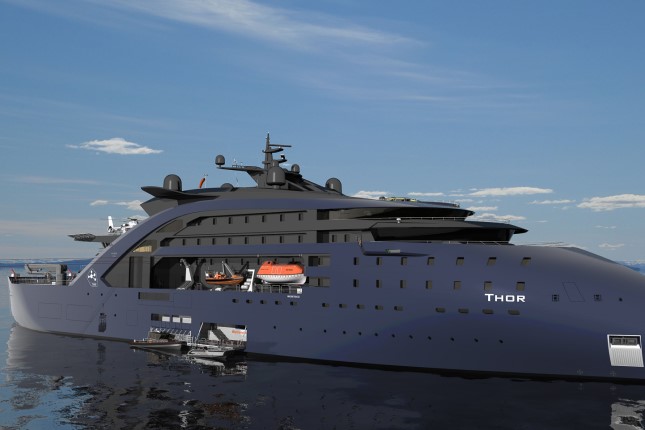Since the beginning of hostilities in Ukraine almost a year ago, the German government has constantly escalated the war in close collaboration with the US and NATO. In doing so, it has deliberately accepted the danger of nuclear war.
While initially saying it would not supply heavy weapons so as not to run the risk of a third world war, Germany is now sending infantry fighting vehicles and Patriot missile systems to Ukraine, and training Ukrainian soldiers to use them. The deployment of heavy Leopard main battle tanks is already under discussion. A decision on this is expected to be made January 20 at the third meeting of the Ukraine Defence Contact Group at Ramstein Air Base in Germany.
The German government categorically rules out a ceasefire and diplomatic solution—at least as long as Russia has not completely withdrawn from Ukraine, including Crimea, i.e., has not capitulated unconditionally. Foreign policy experts now make no secret of the fact that NATO is waging a proxy war against Russia, with Ukraine providing the ground troops.
Within the general population of Germany, the government’s policy is not popular, despite nonstop war propaganda. In the Berlin state election, the Sozialistische Gleichheitspartei (Socialist Equality Party, SGP) is the only party that opposes the war and places its opposition at the centre of its campaign. This has found a strong response. Protests and strikes against the consequences of war—inflation, layoffs and social cuts—are increasing worldwide.
A poll commissioned by broadcaster ARD at the beginning of the year found that only 25 percent of those surveyed thought the supply of weapons to Ukraine was insufficient. That was even before the decision to provide Kiev with Marder infantry fighting vehicles. Fifty-two percent thought the German government’s diplomatic efforts did not go far enough.
To counter the growing opposition to war and militarism, the ruling “traffic light” coalition—Social Democrats (SPD), Liberal Democrats (FDP) and Greens—is relying on a social milieu that historically played an important role in the preparations for World War I and World War II: the representatives of the wealthy upper-middle class.
This social type is embodied above all in the Greens, who have undergone a complete transformation from pacifism to militarism in the four decades of their existence. But it can also be found in the FDP, the self-proclaimed “party of the better-off,” which has always suckled on the teat of the banks and big industry, and among well-paid journalists, academics and, unfortunately, some artists. The Greens are agitating against Russia, pushing for tougher military action and displaying a war frenzy that sometimes makes one doubt their sanity.
Among the best-known faces of this species are, in addition to Green Foreign Minister Annalena Baerbock, Bundestag (federal parliament) member Anton Hofreiter, considered a representative of the “left” wing of the Greens, and Marie-Agnes Strack-Zimmermann of the FDP, chairwoman of the Bundestag’s defence committee. Strack-Zimmermann and Hofreiter, in particular, promote a more aggressive war course so insistently that it is almost impossible to escape them when opening a newspaper or following the news.
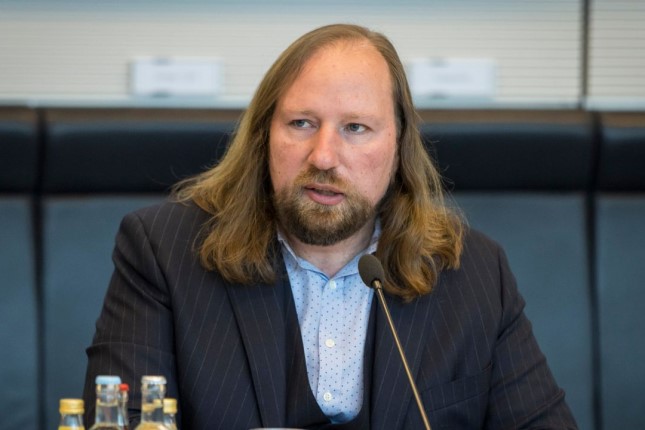
Anton Hofreiter. Photo: DBT / ThomasKöhler / photothek.
On Tuesday last week, accompanied by journalists and photographers, Foreign Minister Baerbock became the first high-ranking Western politician to travel to Kharkiv, which lies just 25 kilometres from the Russian border. It was the foreign minister’s fifth visit to Ukraine since taking office and third since the war began.
The risky trip, which Baerbock made by train, together with her Ukrainian counterpart Dmytro Kuleba, served exclusively propaganda purposes. Baerbock campaigned for intensifying the war and supplying more heavy weapons. “Kharkiv illustrates how important liberation is—and thus how important further arms deliveries are,” she declared. The city, she said, was a “symbol of the absolute insanity of Russia’s war of aggression in Ukraine.”
Kuleba then expressed his conviction that the German government would soon equip Ukraine with Leopard-type heavy battle tanks.
For his part, Hofreiter dreams of huge German tank battalions rolling toward Moscow again. A month ago, at an event organized by the Berliner Verlag publishing house, he announced that there were only two ways to protect Ukraine in the long term: Either bring it into NATO, which would be the “cheaper option,” or equip it with 3,200 Leopard tanks. Then no one would attack it anymore.
Hofreiter apparently cannot wait to take revenge for the defeat of Hitler’s Wehrmacht (Army) in World War II. The Führer had “only” 3,000 tanks at his disposal when he invaded the Soviet Union in 1941.
Katrin Göring-Eckhardt, the Greens’ long-time parliamentary group leader and Bundestag vice president, also supports the delivery of Leopard tanks to Ukraine. In the former East Germany (GDR), she was a founding member of the civil rights movements “Democracy Now” and “Alliance 90” and advocated the slogan “Swords into Ploughshares.” Now, for the benefit of the NATO in the war against Russia, she wants to turn ploughshares into tanks.
Göring-Eckhardt, who holds high-ranking positions in Germany’s Protestant Church in addition to her political offices, had already voted in favour of Bundeswehr (Armed Forces) participation in the war against Yugoslavia in 1999. “At that time, I read the Bible very, very much and talked to many people about it, which was very important to me,” she later reported. “I told myself that when it comes to war and peace, or life and death, you can’t go against your faith.” Nevertheless, she said, she voted in favour of military action, and in retrospect she was very glad she did.
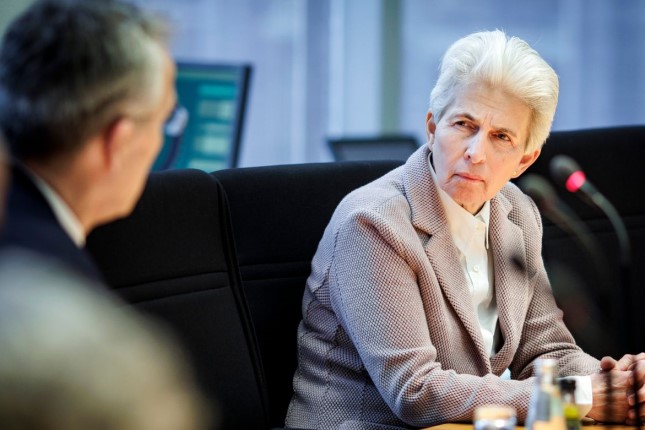
Marie-Agnes Strack-Zimmermann with NATO Secretary General Jens Stoltenberg. Photo: DBT / Janine Schmitz / photothek.
Marie-Agnes Strack-Zimmermann, the daughter of a bank manager and mother of three, worked for a publisher of books for young people and was active in local politics in Düsseldorf before she entered the Bundestag for the FDP in 2017 and discovered her enthusiasm for tanks and guns.
The fact that Rheinmetall, Germany’s second-largest arms manufacturer, is headquartered in her Düsseldorf constituency may have played a role. Strack-Zimmermann is not only the chairwoman of the Bundestag’s defence committee, which has a say in decisions on armaments contracts worth billions, but is also a member of two arms industry lobby organizations, the Förderkreis Deutsches Heer and the Deutsche Wehrtechnische Gesellschaft—a conflict of interest to which she openly admits.
Last week, Strack-Zimmermann traveled to Taiwan for political talks at the head of a high-ranking FDP delegation. Like the visit last year by then-Speaker of the US House of Representatives Nancy Pelosi, her trip was aimed at provoking Beijing and launching a war against China, a rising economic power.
The conflicts in Ukraine and Taiwan must be thought of together, Strack-Zimmermann said during her trip. “We are in a systemic confrontation between democratic and autocratic states,” she declared.
She called for increasing pressure on China. Germany had to question whether trade with China was still the right signal, she said, “and whether we don’t promote free trade much more strongly with those states in the world that are free and democratic.”
Fanatical war supporters can also be found in the ranks of the SPD and the Left Party. For example, the prime minister of the state of Thuringia, Bodo Ramelow of the Left Party, aggressively advocates the delivery of weapons to Ukraine. The Left Party’s lead candidate in the Berlin state election, Klaus Lederer, denounces criticisms of NATO’s war course as a “left-wing, reactionary love of peace.”
The war hysteria of wealthy middle-class layers
The transformation into fanatical warmongers of politicians who used to call themselves pacifists, leftists or liberals confirms the Marxist view that class interests—and not good intentions or abstract “values”—determine the course of history. It is a social phenomenon. If those who used to rail against giving children “war toys” now rave about heavy weapons, this cannot be explained by individual motivations.
Certainly, supposed shock over the Russian attack on Ukraine is not the reason. The Greens supported the bombing of Yugoslavia in 1999, in violation of international law. They offered little opposition when the US destroyed Baghdad and bombed Iraq back to the Middle Ages in Washington’s 2003 “Shock and Awe” attack, employing carpet-bombing, pressure bombing and other terrorist measures. In 2011, they criticized Angela Merkel’s government for not participating in the destruction of Libya.
No less mendacious is the mantra of a “systemic conflict between democratic and autocratic states.” The offensive against Russia and China is accompanied by the strengthening of fascist forces within the Western countries. This is true in the US, where the fascist wing of the Republicans dictates the political agenda; in Italy, where Mussolini’s heirs are in government; in Germany, where the far-right Alternative for Germany determines refugee and other areas of policy; in Israel, where convicted racists sit in the ultra-right government; and in many other countries.
The war frenzy of wealthy upper-middle-class layers is an unmistakable sign of changes in the social underbelly that lead not only to war, but also to revolution. Capitalism is in a deep international crisis. It has not resolved any of the problems that led to the First and Second World Wars. The dissolution of the Soviet Union and the introduction of capitalism in China three decades ago have set off a bitter struggle for the imperialist redivision of the globe.
At the same time, the ruling elites have lost all inhibitions and enriched themselves immeasurably at the expense of the working class. This has benefited not only the super-rich and CEOs, who collect salaries in the tens of millions, but also wealthy sections of the middle class. Those who own shares and real estate portfolios have grown rich over the past three decades. There are now over 26,000 income millionaires in Germany, while 13.8 million people live in poverty. Wealth is even more unequally distributed.
The Greens embody the interests of these wealthy upper-middle-class layers who have benefited from the impoverishment of the working class and now fear its resistance. The Greens already supported a social counterrevolution during their first participation in the federal government, under Chancellor Gerhard Schröder (SPD) from 1998 to 2005. At that time, the labour market, pension, health care and tax “reforms” of the SPD-Green coalition set in motion a huge redistribution from the bottom of society to those at the top. Now, the Greens are agitating for Germany to enter a war that threatens to destroy all of humanity.
Source: Wotld Socialist Web Site.
